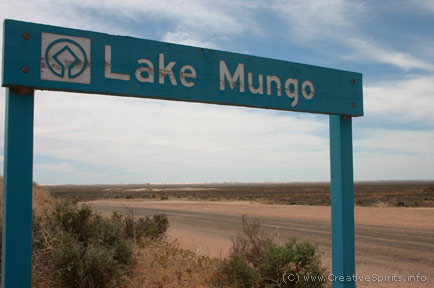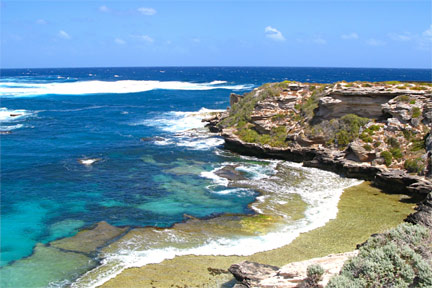History
Timeline results for
Found 1169 results for your search. Showing page 58 of 59.
30,000
-
Aboriginal people were living around the now extinct lakes of the Willandra Lakes system. Evidence shows signs of spiritual and creative life and technology linked to much later Aboriginal culture.
-
Devils’ Lair in southernmost Western Australia is home to Aboriginal people who leave bone tool artefacts, including unique bone-beads of split-pointed macropod shin bones. The cave is occupied from this time to 6,000 BP.
-
Oldest evidence of bread making in the world at Cuddy Springs (ancient lake located between Marra Creek and Macquarie River, near Carinda, western NSW).
30,700
-
Age of fireplaces (such as underground oven) at Lake Mungo National Park, NSW.
-
Aboriginal people living at the Keilor site (20 kms north-west of Melbourne) in Victoria.
35,000
-
Age of a oldest known camping site found in the Pilbara region, Western Australia, near the Jugaling Rock Shelter. The site belongs to a mining lease jointly owned by Rio Tinto and Hancock Prospecting. Both companies refuse to permanently exclude the site from mining [1].
-
Carved tools discovered in Riwi Cave in the southern Kimberley region of Western Australia are thought to be between 35,000 and 46,000 years old which would make them the oldest artifacts of their type found in Australia. Archaeologists excavated eight tools made from kangaroo bone in the early 1990s. They might have been used as spear tips or for weaving baskets or working skins.
37,000
-
Papuan and Aboriginal groups split, long before the continents are finally cut off from each other (around 8,000 years ago).[2]
4,000
-
Research indicates that humans migrated to Australia from India [3], bringing with them different tool-making techniques such as microliths (small stone tools that formed the tips of weapons), and the Dingo, which most closely resembles Indian dogs.
400,000
-
Mitochondrial DNA puts the origin of Homo Sapiens much further back and indicates that Australian Aboriginal people arose 400,000 years ago from two distinct lineages, far earlier than any other racial group. [4]
43,000
-
The oldest dated art in Europe is 40,800 years old and was found in the El Castillo cave in Spain. It contains many red hand stencils, similar to stencils found in Australia.
-
Age of ‘Mungo Man’ (also known as Lake Mungo 3 human remains, or LM3), a hunter gatherer who lived in western NSW. His skeleton is the oldest known remains in Australia. Named after Lake Mungo National Park, NSW, 987 km west of Sydney, where his remains were found. Footprints discovered at Lake Mungo are believed to be 23,000 years old.

Lake Mungo, New South Wales. Ancient camp sites have been found in this area.
45,000
-
Rock engravings made in South Australia - the earliest dated petroglyphs.
-
Research by the Australian National University suggests the most likely route taken by the first people to come to Australia was from southeast Asia to the Australian mainland. It identifies the least-cost route as going from Borneo to Sulawesi and through a series of smaller islands to Misool Island off the coast of West Papua. It follows roughly the same path as the northern route described by US anthropologist Joseph Birdsell in 1977. Proof for that route is still lacking because the islands along Birdsell’s northern route have received comparatively little archaeological attention due to isolation, expense, and political conflict in West Papua." [5]
49,000
-
Archaeologists find the earliest known use of ochre in Australia and south-east Asia and bone fragments of extinct megafauna, including the diprotodon, at the Warratyi rock shelter in the northern Flinders Ranges, SA, in the traditional lands of the Adnyamathanha people. “The idea there was no interaction between humans and megafauna has really been put to bed by the Warratyi evidence.” [6]
5,000
-
Occupation site, Penrith Lakes (about 50 kms west of Sydney), NSW.
-
Settlement of Pacific Islands.
-
Coastline of Australia takes its present form. Rottnest Island (off Perth, WA), previously connected to mainland Australia, becomes an island.

Rottnest Island, Western Australia. Aboriginal people saw the island when it was still connected to the mainland. Photo: Zsuzsanna Kilian, sxc.hu
50,000
-
A study of ancient Aboriginal hair samples reveals distinct Aboriginal populations were present in Australia with little geographical movement for up to 50,000 years. The research found that Aboriginal people are the descendants of a single founding population that arrived in Australia 50,000 years ago, while Australia was still connected to New Guinea. Populations then spread rapidly – within 1,500 to 2,000 years – around the east and west coasts, meeting somewhere in South Australia. [7]
Clearly the environment did change significantly but nevertheless they were able to survive in one area with a fixed set of resources for up to 50,000 years. Nowhere else in world have humans been able to demonstrate an ability to do that.
— Prof Alan Cooper, research project leader [7]
56,000
-
Suggested age of two north Australian sites (Nauwalabila and Malakunanja, about 300 kms east of Darwin).
References
View article sources (7)
[1]
'Owners fight to protect country', Koori Mail 424 p.10
[2]
'World-first genome study reveals rich history of Aboriginal Australians', ABC News 22/9/2016
[3]
'Genomes link aboriginal Australians to Indians', nature.com 14/1/2013. Some Aboriginal Australians can trace as much as 11% of their genomes to India.
[4]
'Homo sapien sapiens originated in Australia, not ‘out-of-Africa’ – DNA evidence', The Stringer 18/12/2013
[5]
'First humans to reach Australia likely island-hopped to New Guinea then walked – study', The Guardian 31/10/2018
[6]
'Astounding archaeology discovery places inland human occupation of Australia at 49,000 years', SMH 3/11/2016
[7]
[7a]
'Aboriginal DNA study reveals 50,000-year story of sacred ties to land', The Guardian 9/3/2017

